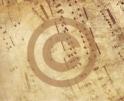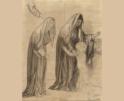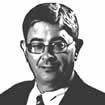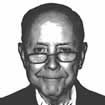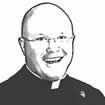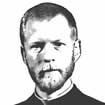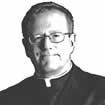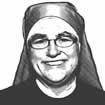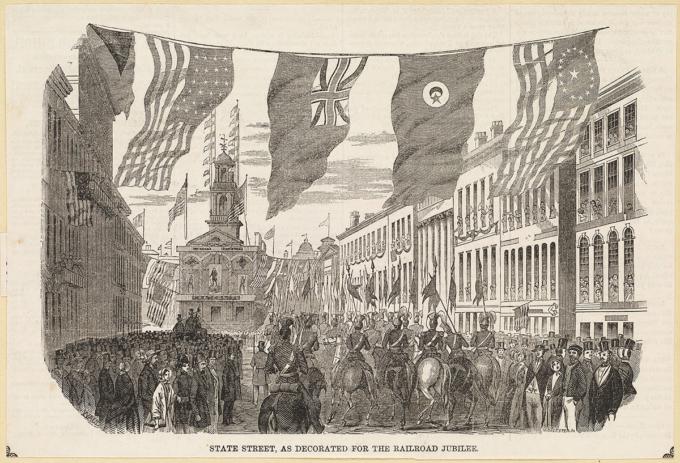
Faith

In September 1851, Boston and Montreal were connected by railroad. The cities celebrated the completion of an interconnecting railroad through Canada and New Hampshire down to Boston with a three-day celebration. Bishop of Boston, John Bernard Fitzpatrick, was in attendance along with the Governor General of Canada James Bruce and the U.S. President Millard Fillmore. An occasion bringing together the church, politics, and technology deserves to be re-examined.
The first public railroad line opened in 1823 in England. By 1827, the first railroad opened in the U.S., but it was not until 1830 that the first railroad was built in New England. The Boston and Lowell railroad opened, and soon, there were connections to Providence and Worcester. North Union Station and South Station became the world's first rail hub. It was only a matter of time before the city connected to Canada. Construction was underway for years before Montreal got a train to Boston in 1851.
Planning for the celebration took place over the summer of 1851, once it became clear Montreal and Boston would be connected. Resolutions were passed in both countries and a committee traveled from Boston to Montreal and everywhere in between to prepare. When the committee arrived in Montreal, the hosts invited them to attend a service at Notre-Dame Basilica. The visit was awe-inspiring for the delegation, who were joined by the Mayor of Montreal and other local politicians.
According to a report published a year later, "The Catholic Cathedral was first examined, and the long journey to its tower performed. The top of the tower is 220 feet (the height of the Bunker Hill Monument) above the level of the street. A magnificent view of the city and its suburbs is obtained at that great elevation, and although the ascent is a laborious one, the visitor is amply repaid for his fatigue, by the extent, variety, and beauty of the panorama which meets his eye."
Months later, the celebration commenced. Bishop Fitzpatrick was in attendance for the Railroad Jubilee. On Sept. 17, 1851, he wrote in his journal about the day: "A great public festival on the occasion of the opening of the Railroad between Canada and Boston is held in the city. Vast numbers of People come from various parts of Canada and are entertained by the city. The President of the United States Mr. Fillmore and the Governor General of Canada Lord Elgin are both present at the celebration. The festival lasts three days during which nearly all business is suspended in the city." The suspension seems to have extended to the bishop himself, for he unusually made no journal entry on Sept. 18 and 19 while the celebration was in town.
President Millard Fillmore's own history with the Catholic Church is an interesting one. The pride of Buffalo, New York, Fillmore rose through the Whig Party from the House of Representatives. New York State political boss Thurlow Weed arranged for Fillmore to attend the 1848 Whig National Convention as a delegate in the hopes of making another man, ex-Governor Seward, the presidential nominee. When the delegates named Zachary Taylor the nominee instead, Fillmore emerged as a compromise pick for vice president. As vice president, he was on the outs with Taylor and the rest of the cabinet. When Taylor died unexpectedly on July 9, 1850, Fillmore suddenly had to guide the country through the Compromise of 1850. He was a fan of railroads and helped subsidize construction costs, even urging a transcontinental railroad years before the country got to work on it.
Railroads transformed Boston and would continue to change where major cities were constructed. The Catholic Church was able to use railroads in innumerable ways, but they alone were not sufficient in getting bishops to visit every parish in their dioceses. Bishops would still rely on local priests for information, but the railroad made it at least feasible to visit towns on day trips that would otherwise have taken weeks. In the 20th century, the Diocese of Oklahoma City would even experiment with chapel cars. Taking a page from the Baptists, three separate railroad cars converted into chapels helped fundraise and spread the word to the remotest corners of the country.
President Fillmore inherited a country on the verge of civil war. His support of the Fugitive Slave Act led to riots in Massachusetts and further divided the Whig Party. He would only carry the Commonwealth of Pennsylvania in the election of 1852, and soon the Whig Party would dissolve into rivaling parties: the Republican party and the Know-Nothing party.
The Know Nothings were a virulent anti-immigrant and anti-Catholic party. Regarding the phrase "all men are created equal," Abraham Lincoln once said "when the Know-Nothings get control, it will read "all men are created equal, except negroes, and foreigners, and Catholics."
Fillmore never denounced Catholics publicly, but he did accept the Know-Nothing nomination for the presidency in 1856. Nevertheless, at least for one weekend in 1851, both the Bishop of Boston and President of the United States could find common ground celebrating a world more connected than ever before.
Matthew Radulski is an archivist for the Archdiocese of Boston.
Recent articles in the Faith & Family section
-
Always building, always being builtJaymie Stuart Wolfe
-
Thanking God for media technologiesSister Hosea Rupprecht, FSP
-
CopyrightsFather Robert M. O'Grady
-
Follow Their Lead!Maureen Crowley Heil
-
The widow's faithScott Hahn



